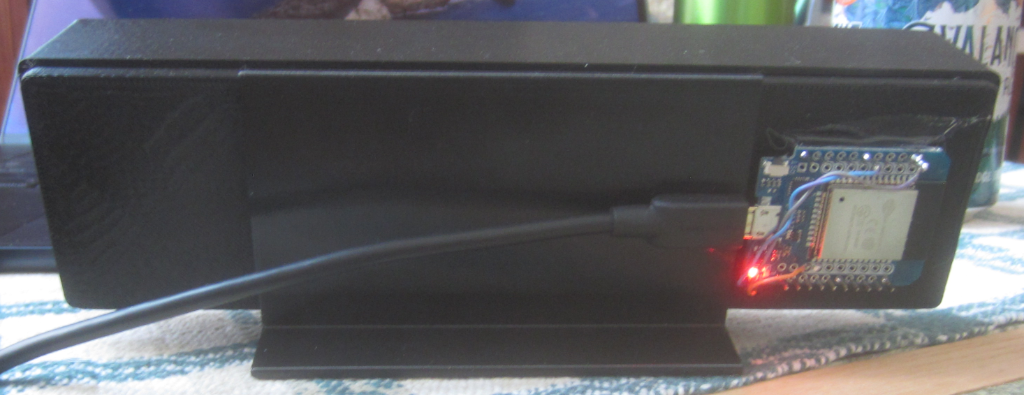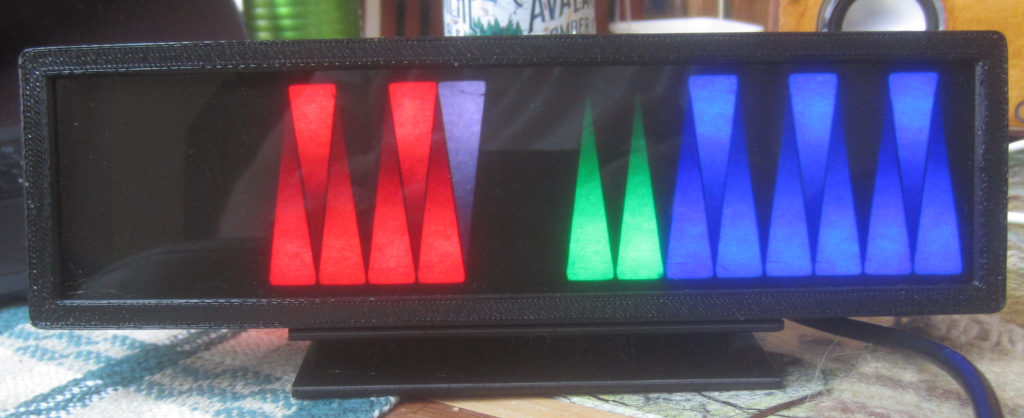June
2024
Did I really need to build another clock? The answer of course is a resounding NO but when I saw this Instructable at:
https://www.instructables.com/A-Linear-LED-Clock-for-Your-Desktop/
I though maybe I should build one as the design is pretty unique and because I can 3D print my own case. So I took the STL files from the Instructable for the case but I wrote all of the software myself for a ESP32 processor in ESP32Forth (my favorite language to code in). There are 35 LEDs that light up all of the clocks triangles made up of two strips of 17 and 18 LEDs each.
This clock is a little different than the one presented in the Instructable because it does not include a real time clock chip. Instead, it uses NTP (Network Time Protocol) to get the time and date from the Internet just like your computer does. In addition, this clock knows about Daylight Savings Time and corrects itself automatically. Because of this, there are no buttons required to set the time. In fact, there are no buttons or switches at all on this clock.
| Picture |
Description |
 |
Finished Triangle Clock in its 3D printed
case and on its stand. The case was printed using PETG filament. |
 |
Rear view showing the ESP32 module mounted
to the back. of the case. The clock is powered by a USB power module via a USB cable. The LED on the module indicates power is connected. The stand tilts the clock back a bit to make viewing easier. |
 |
This is the time display. The blue
triangles are minutes. The green triangles are 10's
of minutes. The Red is hours and the yellow (not
shown in this image) is 10's of hours. So the time
displayed in this image is: 6:29. The white triangle which is pointing down is the seconds indicator and it clicks across the clock continuously. |
 |
Every 10 minutes the clock changes to
display some beautiful patterns that are randomly
chosen. Here is one. You really cannot appreciate how pretty the patterns are until you see them in person. The LED colors are bright, vivid and pure. The piece of printer paper placed inside the clock between the outer gray acrylic and the LED's gives a nice grainy look to the triangles. |
 |
And here is another beautiful pattern that
rotates around the clock. |
Questions and comments to me Craig at: calhjh@gmail.com